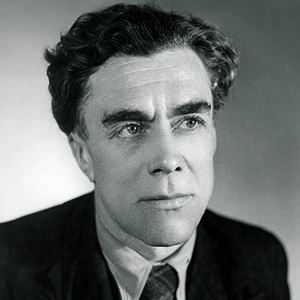
Vainonen

On graduating from the Petrograd College of Choreography (teacher - V.I. Ponomaryov), he joined the Kirov Theatre of Opera and Ballet as dancer (1919-38), becoming choreographer with the Company in 1935; from 1946-50 and 1954-58, he was choreographer at the Bolshoi Theatre.
At the start of his career, he performed character and grotesque roles: The Moor (Petrushka), Clown (The Fairy Doll), Satyr (Les Saisons).
In the 20's, he started to work as choreographer, mounting several concert numbers.
In 1930, he choreographed (together with V.P. Chesnakov and Leonid Yakobson) Shostakovich's ballet The Golden Age, displaying a tendency towards the characteristic, the grotesque, an ability to transpose the movements of everyday life into dance, and to give form in dance to contemporary and historical signs of the times.
In his ballet, The Flames of Paris (1932, Kirov Theatre, new version 1936; 1933, Bolshoi Theatre; revivals 1947 (for which he won the State Prize, 1947) and 1960; (1950 Budapest production), he choreographed dances from different regions of France at the time of the French Revolution, which became a means of characterizing the socio-historical milieu, the people en masse who, for the first time in the history of Russian ballet, were given a leading role on stage. The ballet reflected the influence of the staging of mass spectacles characteristic of the first post-revolutionary years, a tendency towards narrative action, in the guise of pantomime, which prepared the way for dramballet.
The theme of the present day which is given form in folk dance and pantomime adapted for the stage is found in other ballets by Vaynonen: Partisan Days (1937), Militsa (1947), Antonio Spadavecchia's The Coast of Happiness (1952, Novosibirsk Theatre), Nutcracker (1934 and 1954, Kirov Theatre; 1939, Bolshoi Theatre; 1950, Budapest).
He also did new versions of the classical ballets: Raymonda (1938, Kirov Theatre), Harlequinade (1945, Minsk Theatre), The Sleeping Beauty (1952, Novosibirsk Theatre). His other ballets: Vasilenko's Mirandolina (1949, Bolshoi Theatre; 1965, Navoy Theatre, Tashkent), Gayane (1957, Bolshoi Theatre), dances in Smetana's opera The Bartered Bride (1948, Bolshoi Theatre). He also wrote the libretto (together with Pavel Malyarevsky) for Shchedrin's The Humpbacked Horse (1960, Bolshoi Theatre) and choreographed dances in operas and concert numbers.